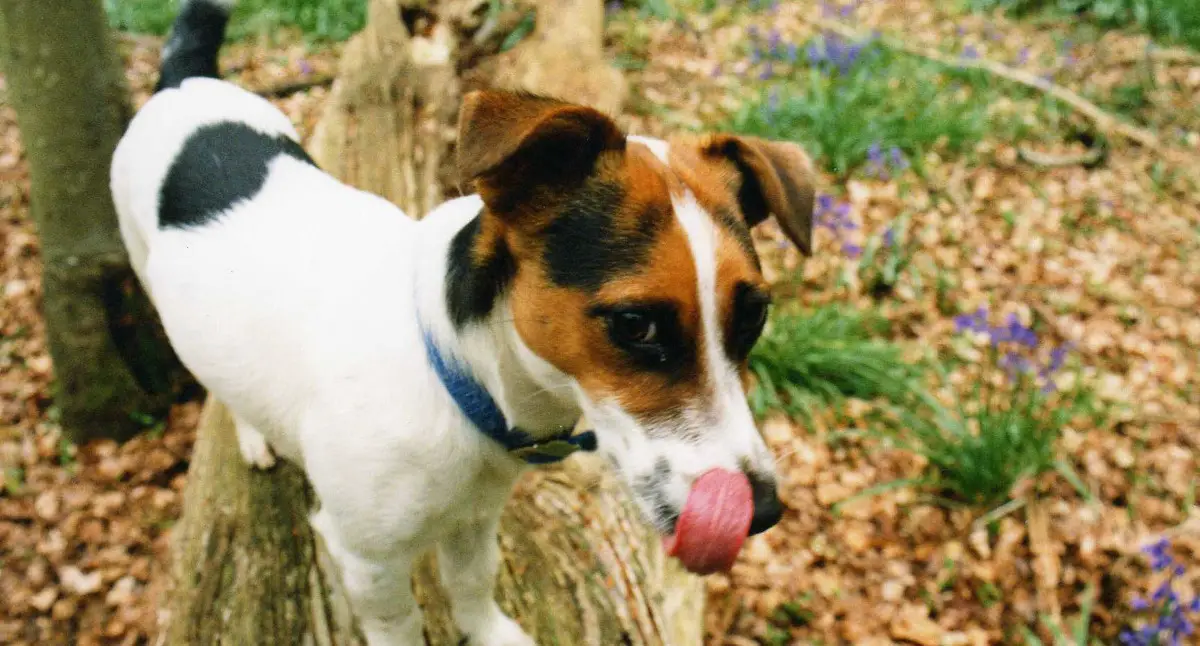Table of Contents
*This post may contain affiliate links. As an Amazon Associate we earn from qualifying purchases.
Autumn is a time of cooling temperatures, turning leaves, and preparing, in some areas, for the onslaught of winter. It’s also a fantastic time to get out and hit the trail with your pup.
Hiking is an excellent activity for people of all ages and fitness levels. And it goes without saying that the energetic, nature-loving Jack Russell and hiking go together like salt and pepper.

But what if you’ve never taken your pup into the wild before? Where should you go and what should you bring?
Well, pack your snack bag and leash, and come on. We’re going to tell you.
Before You Start
Is it as simple as choosing a trail and heading off? Yes and no.
To get the most out of your experience, it’s important to be prepared, to take basic safety precautions, and to have a handle on basic trail etiquette before you go.
Vaccinations
A lot of us don’t give vaccinations much thought, except for once a year, when we get that vet’s reminder in the mail. But heading out into the wilderness means that your dog may be exposed to viruses, bacteria, and other threats that dogs don’t encounter in the course of a normal day.
Fortunately, there’s a lot you can do to protect your pet.
Rabies
Rabies is one of the core vaccines, and hopefully, your dog is already up to date. If they’re not, then don’t hit the trail without it. Rabies carriers like skunks, raccoons, and foxes are common to many wilderness areas. And this is one disease you don’t want to catch you unawares.
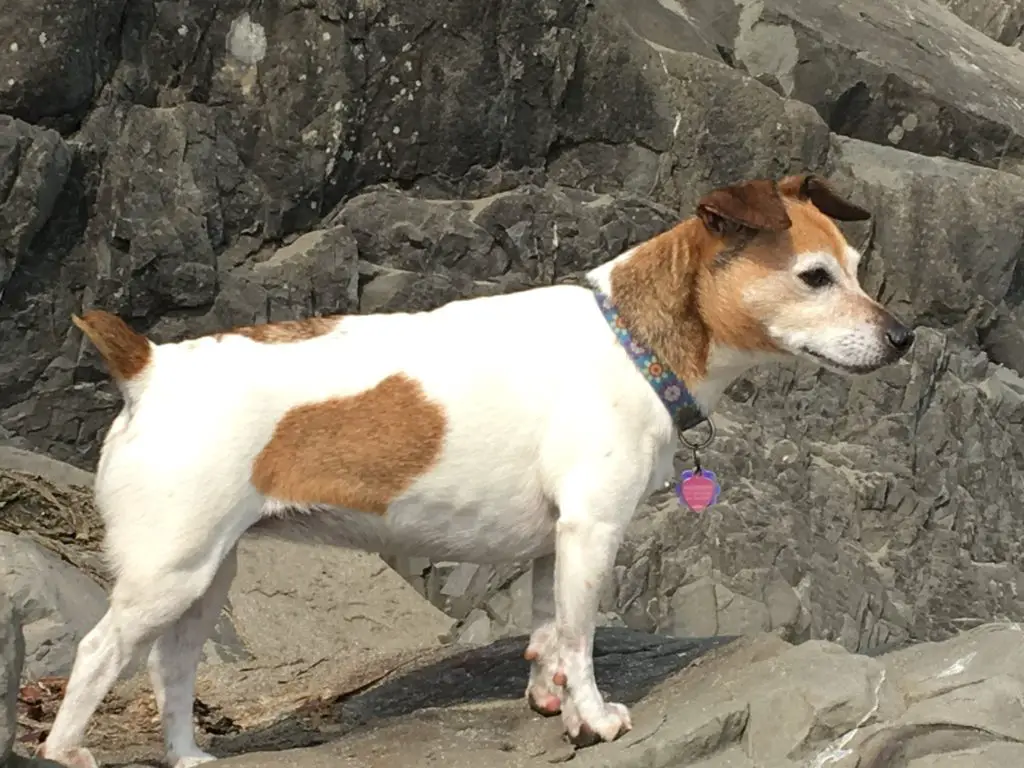
Rattlesnake
Do you live in rattlesnake country? If so, then you might consider asking your vet about the rattlesnake vaccine.
The rattlesnake vaccine won’t negate the effects of a rattlesnake bite. But it will buy you time to get your dog to the vet for antivenin treatment. And that’s worth a lot.
Leptospirosis
Leptospirosis is a disease caused by a bacteria found in water, soil, and the urine of infected animals. It can be deadly, and it can affect humans, too.
The leptospirosis vaccine isn’t one of the core vaccines, so unless you have specifically requested it, your dog probably hasn’t had it. So if you think your dog might benefit from it, talk to your vet.
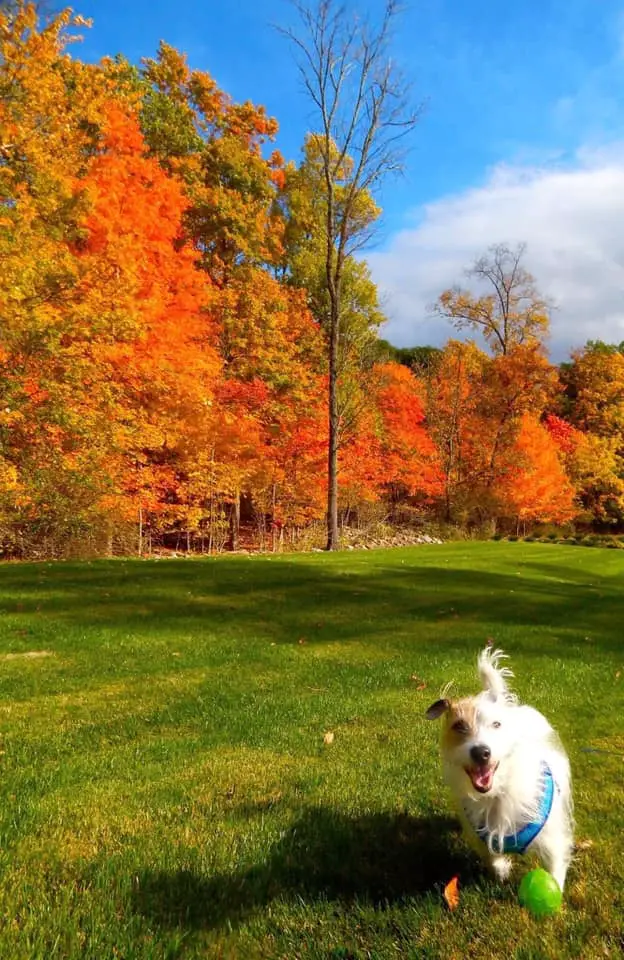
Lyme disease
We’ve all heard a lot about Lyme disease in recent years. It’s spread by ticks, and it’s nasty, both for your pet, and for you. On top of that, once you or your dog has it, it can keep coming back.
If you live in an area with Lyme disease, ask your vet about the vaccination. It may save you, and your dog, a lot of misery.
Is your dog off-leash ready?
You’re on the trail, there’s no one else around, and your dog is raring to go. You might be tempted to unclip that leash.
But hold that thought.
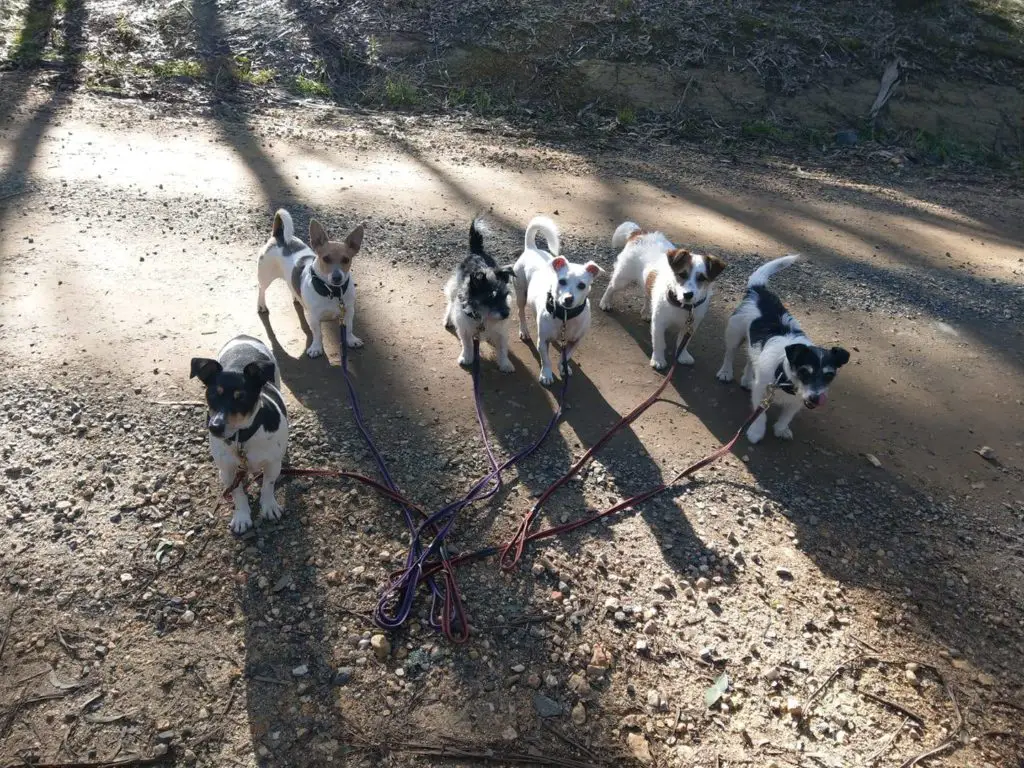
Is your dog really off-leash ready? Ask yourself the following questions:
- Can you trust them to stay in your sight?
- If you call, will they drop everything and run back to you?
- Is there any chance at all that they will charge other hikers or dogs?
- Are they liable to run off after a rabbit, bird, snake, or even a bear?
- Do you know how they would react to livestock?
If you can’t trust your dog to stay in your sight, leave other dogs and animals alone, and return to you immediately when called, then play it safe, and keep them on the leash.
Their safety, and the safety of other hikers, depends on it.
Necessary equipment
Be prepared…and that goes for your dog, too! Whatever you pack for yourself, ask yourself if your pet will need something similar.

First aid kit
Boo-boos happen, for us and for our dogs, as well. So be sure to take along your doggy first aid kit.
What should you have in your kit? At the minimum:
- Tweezers
- Dog-safe antibiotic salve, like bacitracin
- Gauze pads
- Adhesive tape
- An eyedropper
- Styptic powder (to stop small-scale bleeding)
If you want to make a more complete kit, the ASPCA has some suggestions about other items you might include.
Eye protection

Does a dog really need sunglasses? Under most circumstances, no.
However, ultraviolet light can hurt your dog’s eyes, just like it can hurt yours. Also, blowing dust and dirt can cause your dog a lot of grief, too.
If you’re going to be hiking for long periods of time in bright sunlight, or if you may encounter blowing dust, sand, or dirt, then you might consider eye protection for your dog.
Fortunately, special dog-made sunglasses are inexpensive and easy to find online.
Sunscreen
White and light-colored dogs, like a lot of Jack Russell Terriers, are susceptible to sunburn. Worse, sunburn can lead to skin damage and skin cancer in dogs, just like it can with humans. And if that’s not bad enough, sunburn looks different in dogs than it does on us.

Fortunately, it’s not hard to protect your dog. If you’re headed for sunny weather or high altitudes, any child-safe sunscreen with an SPF of 30 to 50 will do. Simply apply it to your dog’s ears, nose, and any other area with sparse hair or no hair.
Boots
Our dogs evolved to be comfortable in a variety of environments. And for the most part, what Nature gave them will protect them from head to toe. But certain types of terrain may require additional foot protection. These include:
- Rough terrain like sharp rocks
- Hot surfaces, including sand and pavement
- Cold or icy surfaces
- Slippery surfaces
Few dogs enjoy wearing boots, but if your hiking will take you into rough conditions, foot protection is definitely something to consider.

Leash and collar
Whether or not you’re planning to let your pup offleash, it’s important to have a leash and collar at the ready.
Do you know the pros and cons of harnesses vs. collars? Or the best material for your dog’s leash?
FYI: a lot of people like retractable leashes, but in general, retractables are better suited to neighborhood walkies than wilderness trekking.
Water and snacks
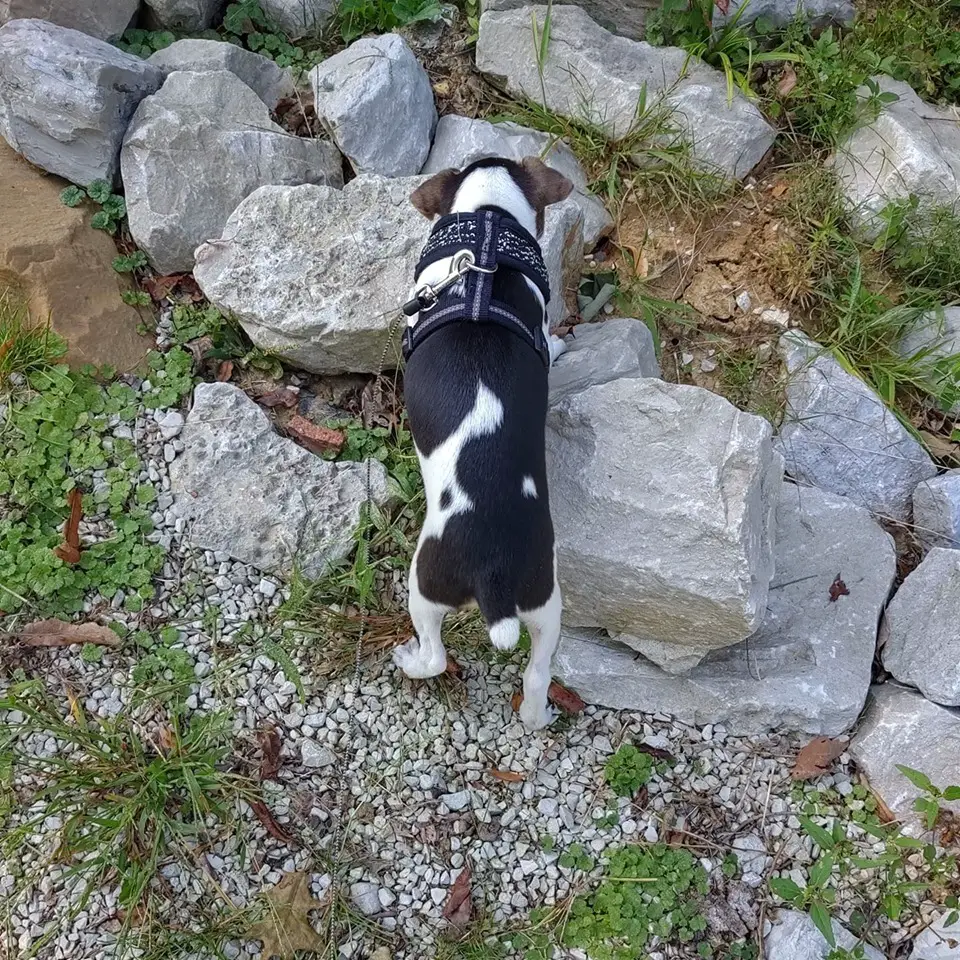
You should always have water available, for you and your dog both. A collapsible fabric water dish makes it easy to provide your dog a drink on demand.
For short hikes of an hour or so, you won’t have to worry about snacks. But if you’re going out for a longer hike, then you and your dog will both need to refuel.
Make sure that everyone’s hiking snacks are nutrient-dense and portable. You can buy pre-made treats, pack some of your dog’s kibble in a bag, or even prepare your own.
Doggy backpack
Does all this sound like a lot to carry? Then why not let your dog carry their own gear?
A dog backpack can keep your hands free, while ensuring that your dog still has their essential kit.
And don’t they look rugged?
Where to Go
It’s not enough to just look for a trail. It’s important to verify that where you’re going is dog-safe and dog-friendly. And, if you’re going to be taking your pup off leash, make sure that where your going welcomes that, as well.
So, where are the trails?
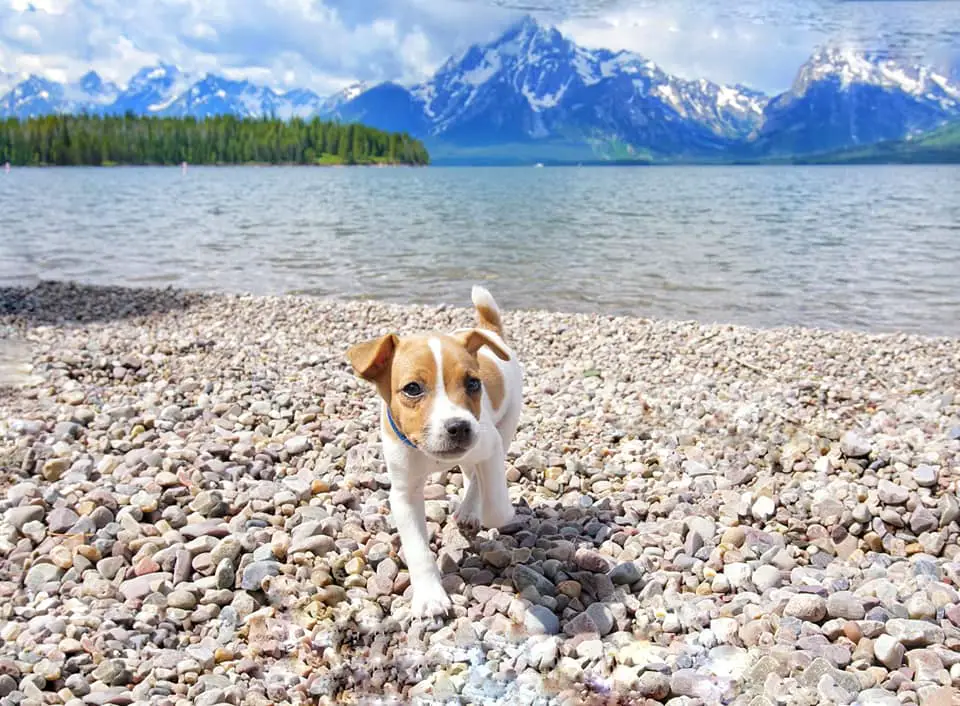
In North America All Trails is the place to go to find, dog-friendly trails in the United States and Canada.
For Central and South American trails, Bring Fido’s list can tell you where to go.
Are you in Europe? Then it’s Bring Fido to the rescue.
iExplore has listings for Asia and the Far East.
And for Australia? Check out the listings over at Australian Dog Lover.
And if you’re in South Africa, check out Canine Sports.
Trail Safety and Etiquette
In addition to knowing whether you can or should let your dog off-leash, there are other issues of safety and etiquette to consider.

Trail safety
Do you know what sort of wildlife lives in the wilderness areas near you? Do you know what sort of small animals might tempt your dog to run too far away for you to call them back? Or which large predators might follow your dog back to you when they finally return?
Are there any plants that could cause your dog grief if they rubbed up against them or even ate them?
If you don’t know the answers to these questions, it’s time to find out.
Trail manners

It’s also important to consider other trail users, especially on the weekends and holidays, when trails may be more crowded. Be aware that in addition to wildlife, you may encounter:
- People who are afraid of or allergic to dogs
- Small children
- Trail users with mobility issues
- People at risk for falling
- Trail runners and cyclists
For your safety and the safety of others, make sure you have complete control of your pup.
Pack it in, pack it out
You knew this had to come up some time, right?
It’s tempting to think that if your dog does its business in the wilderness, you don’t have to pick it up. But that’s simply not true.

Just as dogs can pick up unaccustomed bacteria and parasites while out in the wilderness, wildlife can suffer from exposure to your dog’s feces.
Not only that, but as your dog’s leavings biodegrade, they can enter into and contaminate nearby water supplies.
And that’s bad for everyone.
Don’t just bag it and leave it, either. The environment doesn’t need more plastic.
Bag your dog waste and pack it out, just as you would any other sort of refuse.
Nature will thank you.
Are You Ready to Hit the Trail?
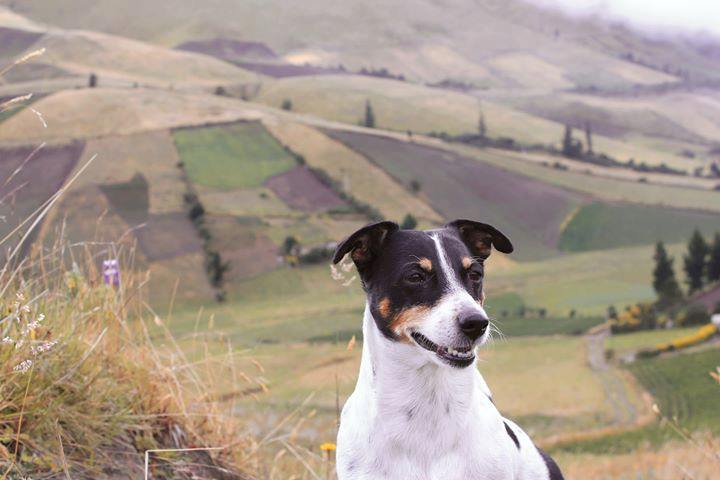
Fall is one of the best times for hiking with your dog. Where will you go?
Do you have a favorite hiking spot where you like to go with your dog? Pics or it didn’t happen!
Featured Image: CC BY-SA 2.0 by Leonora Ellie Enking via Flickr

